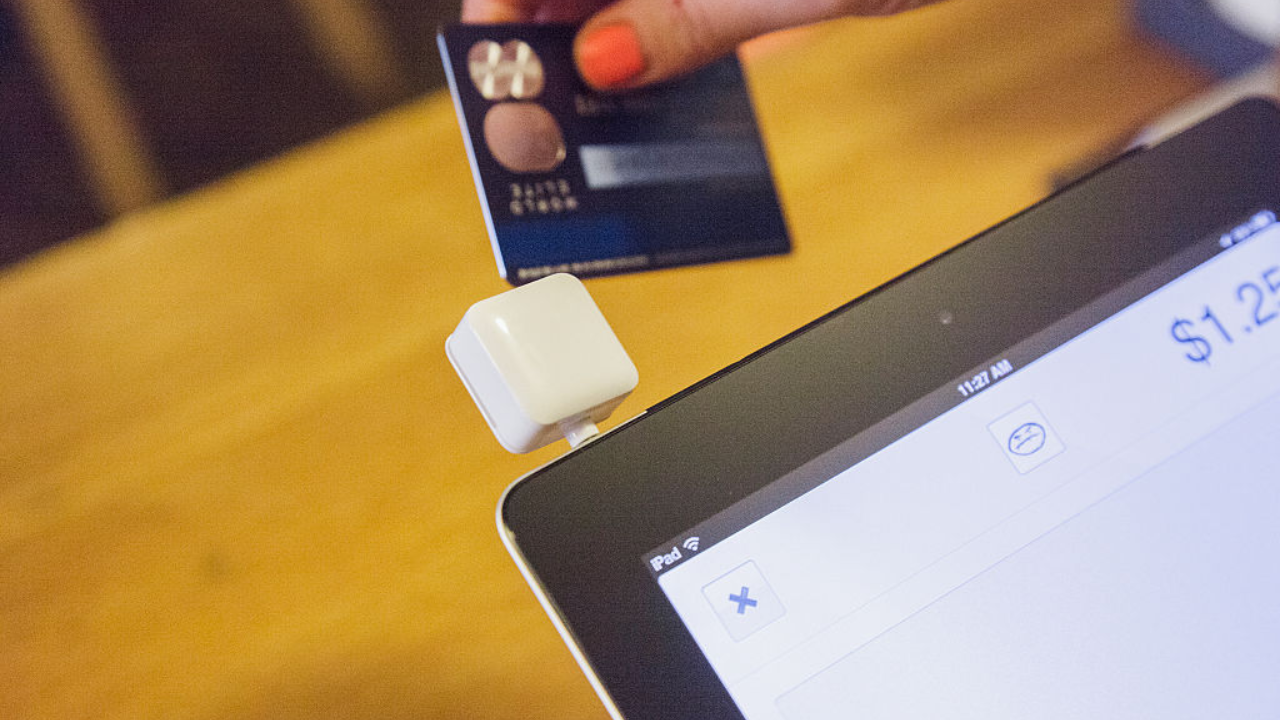Average cost of credit card processing fees

The Bankrate promise
At Bankrate we strive to help you make smarter financial decisions. While we adhere to strict , this post may contain references to products from our partners. Here's an explanation for . The content on this page is accurate as of the posting date; however, some of the offers mentioned may have expired. Terms apply to the offers listed on this page. Any opinions, analyses, reviews or recommendations expressed in this article are those of the author’s alone, and have not been reviewed, approved or otherwise endorsed by any card issuer.
Key takeaways
- You can give your customers more payment options by accepting credit cards, but you will pay a credit card processing fee to do this.
- The average credit card processing fee, which will be taken out of a merchant’s sales revenue, is in the range of about 1.5 percent to 3.5 percent.
- Merchants can negotiate their card processing fees and they are not set in stone.
Whether you’re selling products or services online or operating out of a brick-and-mortar storefront, you’re going to need to work with a credit card processing service to allow credit card transactions. Many small business owners discover credit card processing fees cost more than they realized.
According to industry analysts, the average credit card processing fees range from 1.5 percent to 3.5 percent of each transaction, although the final percentage depends on a host of factors. Also, be aware that credit card processing fees are entirely different from the fees consumers pay for carrying a credit card.
If you’re a business who wants to accept credit as payment, you should do all you can to understand and minimize credit card processing fees. Can you pass credit card processing fees on to your customers? Is it possible to negotiate a lower credit card processing fee? Do Visa or Mastercard charge higher fees than Discover or American Express? Here’s what you need to know.
What is a credit card processing fee?
Every time a customer makes a purchase with a credit card, businesses are required to pay fees to accept credit as payment. These fees can vary depending on the type of credit cards you accept, and they include several different layers of charges:
- Interchange fees: This fee, which can also be referred to as a swipe fee or a discount rate, is paid by businesses directly to the credit card issuer. This fee may be higher for online purchases to account for the increased risk of fraud when a credit card isn’t present for a transaction. Also note that interchange fees can depend on the type of card, how much is being charged and the type of business being operated.
- Payment processor fees: It’s also possible the payment processor will charge an additional fee to facilitate the payment. Payment processor fees can be broken down into smaller fees that take place over time, and may include monthly or annual account fees, equipment rental fees, withdrawal fees, statement fees and others.
- Assessment fees: Assessment fees are paid to the credit card network for the purchase to take place. Note that assessment fees are paid based on total monthly sales instead of a per-transaction basis.
How much do credit card networks charge for processing fees?
It’s important to understand that three major players are involved when it comes to determining how much you’ll pay in credit card processing fees: the bank that issues your credit card, the credit card network and the payment processor. Even so, average credit card processing fees fall within a specific range with each of the four major credit card networks.
| Credit card network | Processing fee range |
|---|---|
| Source: Stripe.com | |
| American Express | 1.43 percent + $0.10 to 3.30 percent + $0.10 |
| Discover | 1.40 percent + $0.05 to 2.40 percent + $0.10 |
| Mastercard | 1.15 percent + $0.05 to 2.50 percent + $0.10 |
| Visa | 1.15 percent + $0.05 to 2.40 percent + $0.10 |
Why are American Express processing fees higher?
Where other banks can issue Visa or Mastercard credit cards, American Express is a closed network, meaning only American Express can issue American Express cards. This gives American Express more control over its fees and how much merchants need to pay to accept their credit cards as payment.
While businesses might have to pay more money to accept American Express credit cards when compared to Mastercard or Visa, a 2019 Nilson Report confirmed that 99 percent of U.S. merchants that accept credit cards accept Amex. This statistic flies in the face of the frequent rumors that many businesses don’t accept American Express, although it’s true that American Express isn’t as universally accepted abroad.
What are the different pricing models for processing fees?
We noted how credit card processing fees can fall within a specific range for each of the major credit card networks, but part of the fluctuation can be attributed to the pricing model chosen for credit card processing fees. Merchants may have the option to accept a pricing model that suits their needs best, so it’s important to know how each pricing model works:
- Tiered pricing: This type of pricing model comes with different pricing for transactions in different tiers or buckets. For example, certain qualified transactions may be charged a lower rate, whereas others require a higher percentage in fees. This type of pricing typically works best for merchants who process most of their transactions in the lowest tier.
- Flat rate pricing: Flat rate pricing works exactly as it sounds. With this pricing model, the credit card processor will charge the merchant a fixed percentage of each transaction plus a small per-transaction fee (usually $0.20 to $0.30 per transaction). This pricing model makes it easy for merchants to anticipate their credit card processing costs over time.
- Interchange Plus pricing: Merchants who are offered the Interchange Plus pricing model will pay the interchange rate for each transaction plus predetermined add-on fees. With Interchange Plus pricing, you may pay the interchange rate plus an additional percentage or a small fee per transaction.
| Model | Average Fees |
|---|---|
| Tiered | 1.5% to 2.9% for card-present transactions, 3.5% for non-present transactions |
| Flat Rate | 2.75% to 2.90% per transaction |
| Interchange Plus | 2.2% + $0.22 per transaction |
Note that the unique factors that influence these pricing models are the reason you might pay different fees to accept an American Express card or a Visa-backed card. Many costs are wrapped into credit card processing fees, which can make the total cost of accepting credit cards vary significantly over time.
How to lower your credit card processing fees
Credit card processing fees aren’t always set in stone. There are a few ways you can lower your costs in order to lessen the burden that these fees can have on your businesses’ overall profit.
- Negotiate fees with credit card processors: The higher the number of transactions, the more likely a processor will see your value as a merchant and want to do business with you. If you have a higher number of transactions each month, you can make the case for your processor to lower your fees.
- Swipe as often as you can: The more you can limit not-present transactions, the less risk you pose to your processor. By maximizing the number of transactions paid for with physical cards and validating the purchase through an added layer of security verification, you’ll minimize the risk assumed by both parties and likely see lower fees.
- Use an address verification service: This is a system that verifies the cardholder’s billing info with the issuer. Many processors reward merchants for using these systems by charging them lower interchange rates.
FAQs
-
Processing fees can fluctuate depending on the card type, rewards offered and the risk assumed by the merchant. Credit card networks are also likely to increase their interchange fees in order to entice banks to carry their products. These fees are one of the most common ways that banks generate revenue.
-
You may face initial fees when you sign up for a credit card processing company that will provide you with terminals that help you process your transactions. Other fees you could face are all over the place but may include fees from your credit card processor each time a customer disputes a charge, fees for chargebacks, fees for non-sufficient funds to pay your credit card payment processor and more.
-
Credit card processing fees can be higher for purchases made online or over the phone, and there’s a good reason why. Credit card chip technology has made in-person purchases considerably more secure, but online purchases are more susceptible to fraud since a credit card chip cannot be used (as is the case when a card is physically presented) to create a unique token for each transaction, and since all you need is a credit card number and a security code to make an online purchase.
The bottom line
Accepting credit card transactions is a key way to build your business and give your customers a wider range of options for covering the costs of your goods or services. However, these card processing fees can significantly increase your business’s overall costs. Knowing how these fees work and the kinds of strategies you can use to lower them is one key way to maximize your earnings and build a profitable business.
Related Articles



